SGS Harassment Policy
Saskatchewan Genealogical Society Governance Policy 29
Updated: September 17, 2006
The Harassment Policy is to insure SGS provides an environment free from harassment where all persons are treated with respect and fairness. This includes paid and non paid staff, volunteers in any capacity, certified instructors and researchers, and all SGS members.
29.1 Purpose:
a) to encourage all members of SGS to acquire a clear understanding of harassment
b) to be aware of the policy position and to take positive measures of prevention and confrontation of harassing behaviours
c) to provide members with an atmosphere which promotes equity and which prohibits discriminatory practices
d) to enforce management and supervisory obligation to diligently and continuously take measures which eliminate harassment and respond effectively to incidents which may occur
29.2 Statement:
a) harassment is a violation of human rights
b) harassment of any nature negatively affects well being and productivity
c) harassment is illegal under The Occupational Health and Safety Act, The Saskatchewan Human Rights Code and the Canadian Human Rights guidelines
29.3 Definition of Harassment
Harassment is defined as distressing comment or conduct that is known or ought reasonably be known to be unwelcome. Due to the complexities and further boundaries of harassment, please acknowledge that harassment of any nature may be less than or exceed the boundaries of this definition.
The Canadian Human Rights code states that individuals have the right to be free from discrimination and harassment on the following grounds:
- race
- ancestry
- place of origin
- colour
- ethnic origin
- citizenship
- creed (religion)
- gender
- sexual orientation
- disability (physical or mental limitation and state of health)
- age
- marital status
- family status
- record of offences
- pregnancy
Types of behaviour which constitute harassment on a prohibited ground include, but are not limited to:
- racial or ethnic slurs
- written or verbal abuse
- threats or reprisals, or implied threats or reprisals
- unwelcome sexual remarks, invitations or requests for sexual favours
- unwelcome remarks, jokes, taunts, suggestions about a person’s body, attire, age, marital status, ethnic or racial origin, religion, sexual orientation, etc.
- displays of pornographic, sexist, racist or other offensive or derogatory material (e.g. graffiti or pictures)
- practical jokes or humour which result in embarrassment or insult
- leering, (suggestive staring) or other offensive gestures
- inappropriate physical contact or closeness
- physical or sexual assault (criminal offense)
Lack of intent on the part of the harasser is not a defense. The impact of the behaviour on the recipient is of primary significance. Victims often feel intimidated, humiliated and degraded.
29.4 SGS Members Responsibility
Everyone has a responsibility to ensure his/her environment is free from harassment. If you condone inappropriate or discriminating behaviour, this can have the effect of creating an intimidating, hostile or an offensive work environment. As members, we have a responsibility not to harass others and to change our behaviour if we know or suspect or are informed that our actions might be considered harassment by another person.
29.5 What To Do If You Are Harassed
Harassment is unpleasant and intimidating. Fear of retaliation, guilt or embarrassment may discourage communication about an incident or incidents. However, members are encouraged to bring problems forward. Any problem of harassment will be handled with respect, sincerity and confidentiality.
Individuals also have the right to formalize an unresolved complaint or initiate a complaint of harassment with the Human Rights Commission.
If you believe you have been harassed, take action. Ask the harasser to stop. If this fails to resolve the problem, if you continue to have concerns, or if you are unable to ask the harasser to stop, immediately bring the matter to the attention of the Branch President or the Executive Director of SGS.
29.5 a) Informal Complaints:
Informal complaints are complaints brought to SGS’s attention but which are not written and do not result in an investigation.
If a respondent is named in an informal complaint, the respondent will be informed of the concern and provided an opportunity to respond to the concern raised. Subject to the agreement of the complainant, a meeting between the complainant and the respondent could be arranged with a mutually acceptable facilitator. This would allow the complainant and the respondent to address concerns about one another’s behaviour.
If an alleged harasser is not named in an informal complaint, information will be provided to the work site regarding SGS’s opposition to such behaviour and a review of the Harassment Policy will be outlined.
b) Formal Complaints
SGS members wishing to make a formal complaint should do so as soon as possible after the incident has occurred. Formal complaints must be filed within one year and will be dealt with immediately and on a confidential basis.
Formal complaints must be written outlining the name of the complainant and respondent, details of the alleged harassment, including the name(s) of any other parties who are or may be aware of or witness to time(s), date(s) and locations of the incident(s).
Formal complaints are to be forwarded to the President in care of the Executive Director, marked Personal and Confidential. (Appendix 9)
29.6 Investigation Process
No complaint will be regarded as substantiated until it has been investigated. Please be aware that during an investigation, it may be imperative to release some aspects of confidential information.
A Complaint Committee, consisting of the chair, past chair, one director and the Executive Director, will review all evidence and:
a) where the allegations of harassment are substantiated, take such necessary action to prevent any continuation of the unacceptable conduct, ensuring that the complainant suffers no negative consequences and the respondent is appropriately disciplined, or
b) where there is insufficient evidence to determine whether or not harassment has legitimately occurred, take such steps as may be reasonable and possible to ensure that neither the complainant nor the respondent suffers negative consequences because of the allegations of harassment.
c) where there is evidence of frivolous or malicious complaints, or intentional fabrication of allegations, prescribe appropriate disciplinary measures.
d) inform individuals directly involved of investigative findings and outcome which resolved the problem.
e) maintain a confidential file of all complaints and their resolution.
Disciplinary measures as decided by the Board of Directors on the recommendation of the Complaint Committee can range from a written reprimand and suggested counselling to withdrawal of membership from Saskatchewan Genealogical Society, Inc.
29.7 Retaliation
Retaliation against any individual for reporting harassment, providing information or associating with someone who has filed a complaint or participated in an investigation will not be tolerated and will be treated as harassment.

